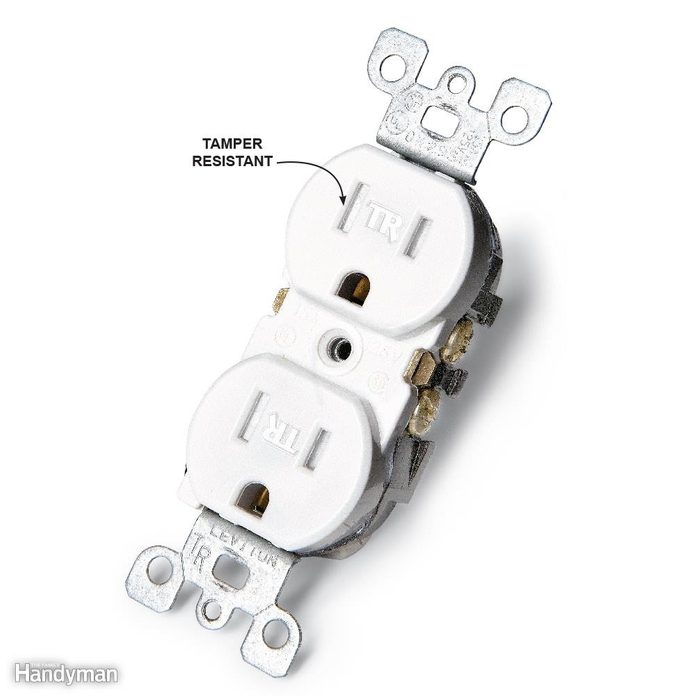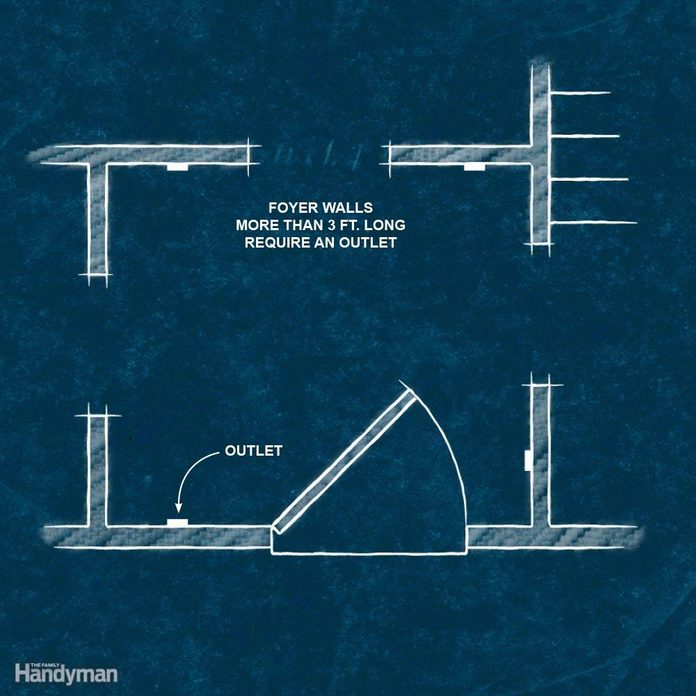
Doing Electrical Work for Friends and Family
Many jurisdictions across North America allow you to do your own electrical work in your home. As long as it passes inspection, there’s no code violation concerns for DIYers handling their own wiring. Trouble is, once friends and family hear you’re good at electrical work, requests to help with theirs may start coming. This is a code violation in most places. Working on your own electrical system is fine, but only licensed electricians can work on someone else’s. However, make sure to check with your local municipality before performing any electrical repair work on your own.

Choosing the Wrong Circuit Breaker
To help you understand which electrical protection goes where, consider what each type of breaker was designed to do and make sure to follow the national electric code.
Standard Circuit Breaker
Circuit breakers protect home electrical wiring and equipment like furnaces, air conditioners, dryers and stoves. Standard circuit breakers are better at protecting wiring and equipment than preventing fires and protecting people. That’s why they have largely been replaced by GFCIs and AFCIs. There are only a few places left where standard circuit breakers can be used, typically for large home electrical appliances.
Ground Fault Circuit Interrupter
Ground fault circuit interrupters (GFCIs) protect people in areas where they are likely to be using small appliances and where water is present. GFCI breakers and outlets have been around for awhile, and most people know they’re required in bathrooms, kitchens and outdoors. But our experts are still finding home electrical violations, especially in garages, crawl spaces, storage/work areas in unfinished basements, wet bars (within six feet of a sink) and sump pumps.
And don’t forget that GFCIs need to be readily accessible to be reset. This means they shouldn’t be installed on the ceiling or buried under a hydro massage tub without an access panel.
Arc fault circuit interrupter
Arc fault circuit interrupters (AFCIs) prevent fires in living areas where appliance cords are prone to be pinched or crimped, or chewed by pets. They used to be required only on bedroom circuits, but the National Electrical Code now requires AFCI protection in all living areas. They’re equipped with sophisticated electronics that can detect an arcing condition (like in a frayed lamp cord), which may not be detected by a standard circuit breaker until after a fire has started.
AFCI protection is not just required for new construction. It’s also required where branch-circuit wiring is modified, replaced or extended into existing homes. It’s important to know the difference between GFCIs and AFCIs.

Wiring Switches Without a Neutral Wire
All switch locations need a neutral wire. This national electrical code was mainly implemented to accommodate potential future uses. Electronic switches require a small amount of constant electricity and therefore need a neutral wire run to them.
There are exceptions to this NEC code, but if the walls are currently open anyway, don’t make the next person fish in a wire. Do it right and make sure there’s a neutral wire in the box.

Forgetting Tamper-Resistant Receptacles
Tamper-resistant receptacles are designed to stop a kid from inserting an object, such as a paper clip. They’re required for all locations, indoors and out. Tamper-resistant receptacles are a great invention, so use them — it’s national electric code.

Using a Ground Rod Electrode When There’s a Better System Available
For a long time, metal underground water piping was considered the best grounding electrode available, but virtually all underground water piping today is plastic. And it turns out that rebar in concrete footings or the foundation for a house is actually a more effective grounding system than the ground rods we’ve been using for decades. So if there’s rebar in the new footings, that rebar needs to be used as the primary grounding electrode.
In a nutshell, if a new home has footings with at least 20 ft. of 1/2-in. rebar, the rebar embedded in those footings needs to be used as the primary grounding electrode. This new provision in the national electric code requires a lot of coordination between the trades and project managers. Electricians usually show up long after the concrete people have moved on, but good communication is much easier work than busting up concrete.

Installing the Wrong Cover On an Outdoor Receptacle
On outdoor receptacles, flat covers provide protection only when a receptacle isn’t in use. But it’s not uncommon for extension cords to be plugged in for extended periods of time — for holiday lights, for example. In-use or “bubble covers” provide protection at all times.
The national electrical code defines a “wet location” as an area that is subject to saturation with water or other liquids, and unprotected locations exposed to the weather. The national electric code has another definition for “damp locations” that is more subjective, but if you think the receptacle is going to get wet, use an in-use cover.
And don’t forget the weather-resistant receptacle. The national electric code requires that all 15- and 20-amp receptacles be rated as weather-resistant and tamper-resistant when installed in both wet and damp locations.

Crowding a Service Panel
A service panel requires a working clearance that’s 30-in. wide, three feet deep and six feet eight inches high in the national electric code.
Here’s a good rule of thumb: If you can’t park a refrigerator in front of the panel, you don’t have enough working space. These clearances are designed to protect the person working on the panel. It’s difficult to work safely when your arms are pinned to your sides. The panel also needs to be readily accessible, meaning the area should not be used as storage space or require a ladder for access.

Installing Too Few Receptacles
The purpose of this national electric code is to reduce the use of extension cords. From any point along a wall line, a receptacle outlet needs to be within reach of a six-foot appliance cord, and that six feet cannot be measured across a passageway. The bottom line is that extension cords start fires and create tripping hazards — the fewer extension cords, the better.

Insufficient Electrical Bonding
Grounding is not the same as bonding. Plumbing, phone lines, coaxial cable and gas piping systems need to be not only grounded but also bonded to one another.
Bonding equalizes the voltage potential between conductive systems. This greatly reduces the risk of a person becoming the path for current flow between two conductive systems in case one of the systems becomes energized. Also, in a lightning strike, equalized voltage potential minimizes the risk of extremely high current jumping (arcing) between two systems that can cause a fire.